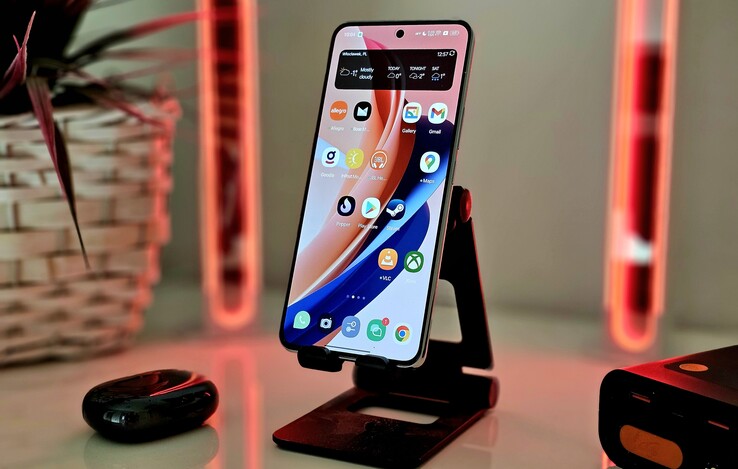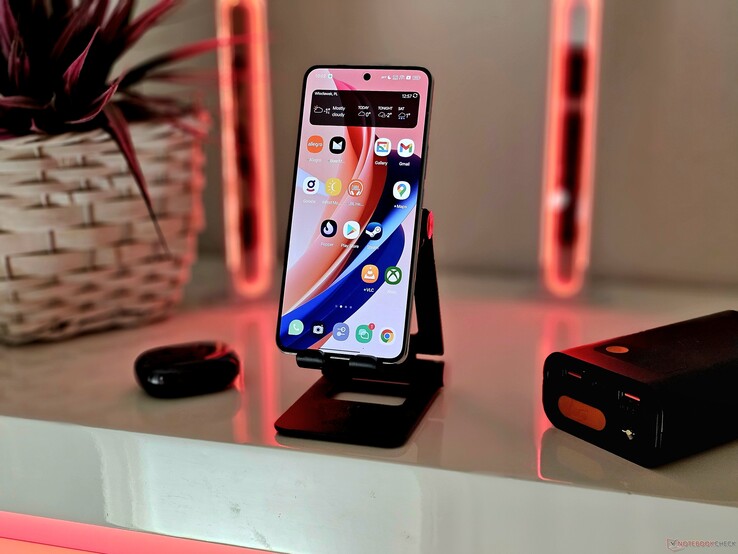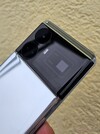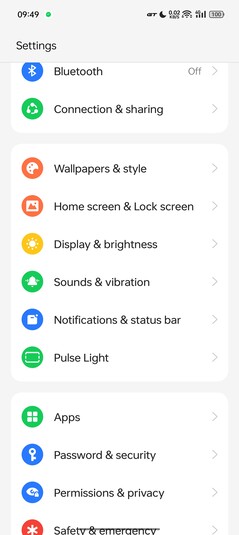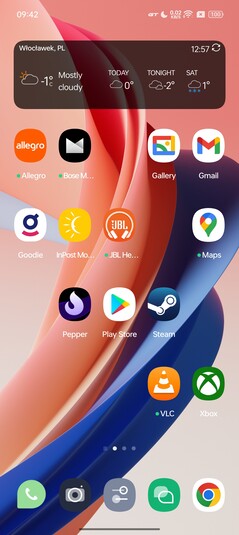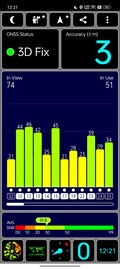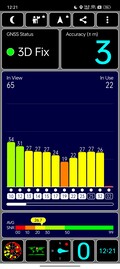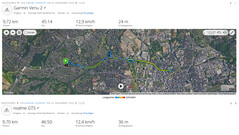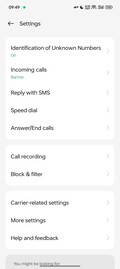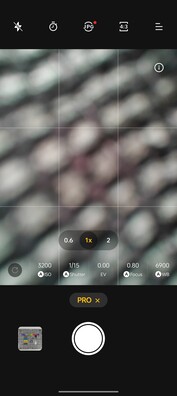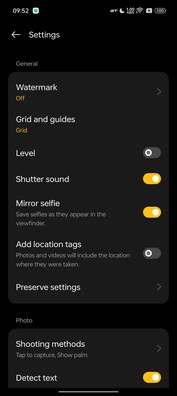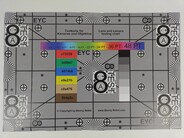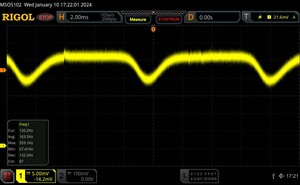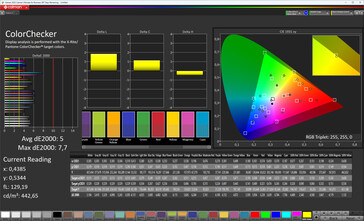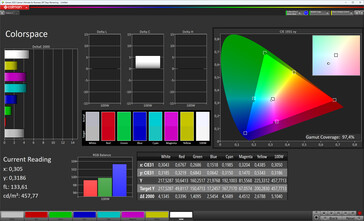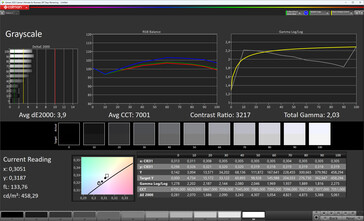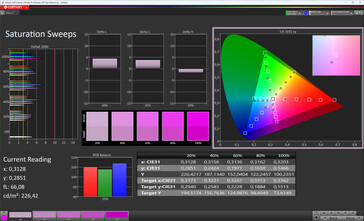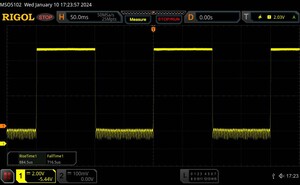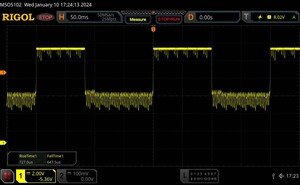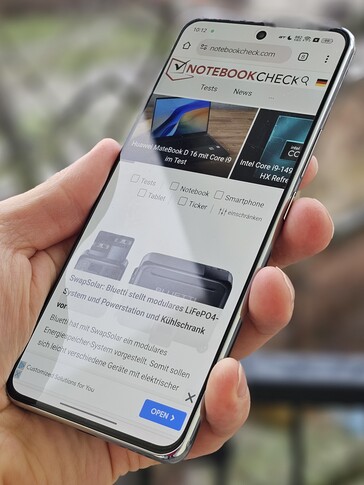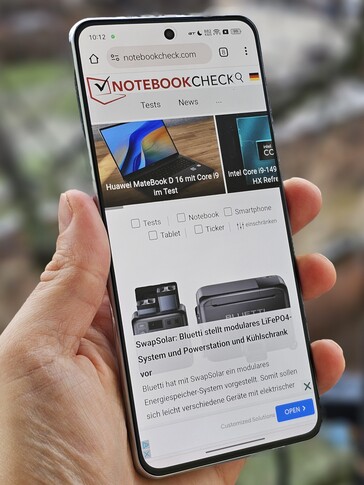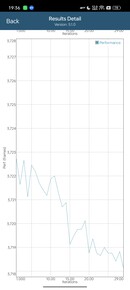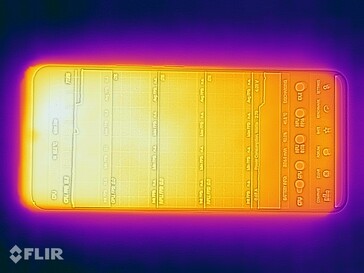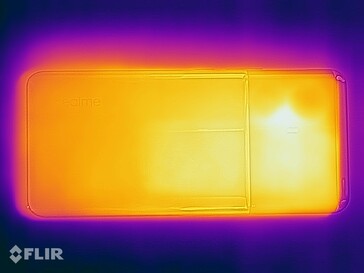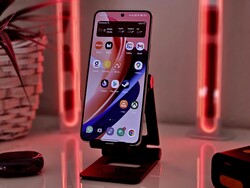Realme GT5 review - A midrange smartphone with 24 GB of RAM, a Snapdragon 8 Gen 2 and a 144 Hz OLED panel
Like its predecessor, the Realme GT5 tries to offer as much power as possible for the price of a midrange smartphone. In order to achieve this, Realme has equipped its top model with a Qualcomm Snapdragon 8 Gen 2, 24 GB of LPDDR5x RAM and 1 TB of UFS 4.0 flash storage. However, one downside is that the flagship killer is unavailable in Europe. Import prices start at around $500 and details regarding a possible international launch are, as of yet, unknown.
Possible competitors compared
Rating | Date | Model | Weight | Drive | Size | Resolution | Price |
|---|---|---|---|---|---|---|---|
| 84.9 % v7 (old) | 01 / 2024 | Realme GT5 SD 8 Gen 2, Adreno 740 | 205 g | 512 GB UFS 4.0 Flash | 6.74" | 2772x1240 | |
| 88.9 % v7 (old) | 11 / 2023 | Google Pixel 8 Tensor G3, Mali-G715 MP7 | 187 g | 128 GB UFS 3.1 Flash | 6.20" | 2400x1080 | |
| 87.7 % v7 (old) | 12 / 2023 | Xiaomi 13T Dimensity 8200-Ultra, Mali-G610 MP6 | 197 g | 256 GB UFS 3.1 Flash | 6.67" | 2712x1220 | |
| 86 % v7 (old) | 05 / 2023 | Samsung Galaxy A54 5G Exynos 1380, Mali-G68 MP5 | 202 g | 128 GB UFS 2.2 Flash | 6.40" | 2340x1080 | |
| 87.4 % v7 (old) | 01 / 2024 | Xiaomi Poco F5 Pro SD 8+ Gen 1, Adreno 730 | 204 g | 256 GB UFS 3.1 Flash | 6.67" | 3200x1440 |
Case - The Realme GT5 comes without IP certification
The Realme GT5 possesses a very rounded glass back that has a huge camera module in the style of the Pixel 8 – the Chinese manufacturer calls this the Awakening Aura System Pro. The midrange smartphone's case is neither dust nor waterproof.
Apart from this small faux pas, the Realme device is in no way inferior to the Android top tier. The materials used feel premium and there can be no complaints when it comes to the build quality. In addition, at 88.8 percent, the Realme GT5's front side has an efficient screen-to-body ratio. Talking of the display: The manufacturer has not specified with which glass the device has been fitted.
Features - The Realme handset has an IR blaster
With Bluetooth 5.3, NFC, an infrared blaster and fast UFS 4.0 storage, the Realme GT5's feature set has no reason to hide. The latter piece of hardware cannot be expanded but, the top version comes with a generous maximum of 1 TB.
The manufacturer made savings when it came to the slow USB-2.0 connector which doesn't support wired image output. However, USB OTG is on board. In our copying test, connected to an M2 SSD hard drive (Samsung 980 Pro), the USB port achieved a sluggish transfer speed of 32 MB/s. The reading and writing of exFAT and NTFS are not supported.
Software - The Realme GT5 has Android 13
At the time of testing, the Realme GT5 comes with Realme UI 4.0 which is based on Android 13. What hasn't been officially communicated is how long the phone maker will support its midrange phone in terms of software updates. The predecessor received three big Android upgrades and four years of security patches – the latter is currently as of October 2023.
Out-of-the-box, the Realme UI in the Chinese version neither has German language support nor does it offer the PlayStore. On top of that, our review sample doesn't possess Widevine L3 support and this is something that greatly restricts the resolution (540p) of series and films on Netflix and co.
Communication and GNSS - The Realme smartphone supports 5G
The GT5 supports access to the 5G mobile network but lacks a wide selection of 4G frequencies – at least in the released Chinese version. The Realme smartphone can choose from 11 LTE bands which also include band 28. However, band 20 is missing.
Within the range of home Wi-Fi, the mid-tier phone offers fast Wi-Fi 7. Despite this, paired with our Asus ROG Rapture GT-AXE11000 reference router, it only managed average-level transfer speeds of around 1,000 MBit/s. The reason for this is that the Realme GT5 didn't want to communicate in the 6 GHz frequency area, during testing.
| Networking | |
| Realme GT5 | |
| iperf3 receive AXE11000 | |
| iperf3 transmit AXE11000 | |
| Google Pixel 8 | |
| iperf3 receive AXE11000 | |
| iperf3 transmit AXE11000 | |
| iperf3 transmit AXE11000 6GHz | |
| iperf3 receive AXE11000 6GHz | |
| Xiaomi 13T | |
| iperf3 receive AXE11000 | |
| iperf3 transmit AXE11000 | |
| Samsung Galaxy A54 5G | |
| iperf3 receive AXE11000 | |
| iperf3 transmit AXE11000 | |
| Xiaomi Poco F5 Pro | |
| iperf3 receive AXE11000 | |
| iperf3 transmit AXE11000 | |
| iperf3 transmit AXE11000 6GHz | |
| iperf3 receive AXE11000 6GHz | |
| Average of class Smartphone | |
| iperf3 receive AXE11000 | |
| iperf3 transmit AXE11000 | |
| iperf3 transmit AXE11000 6GHz | |
| iperf3 receive AXE11000 6GHz | |
In order to be able to assess the smartphone's real-life location accuracy, for comparison reasons, we recorded a route in parallel with the Garmin Venu 2. The detailed data revealed the midrange smartphone to have hardly any inaccuracies, delivering very precise positioning. One additional special feature is the tri-band support for the Beidou satellite systems (B1I+B1C+B2a+B2b), GPS (L1+L2+L5), Galileo (E1+E5a+E5b) and QZSS (L1+L2+L5), to name but a few. Likewise, Glonass (G1) is also supported.
Telephone functions and voice quality - The Realme GT5 offers dual SIM
Cameras - The Realme smartphone boasts OIS
Realme has equipped its GT5 with a 50 MPix main camera. Based on Sony's 1/1.56-inch IMX890, it also possesses image stabilization. Both during the day and at night, the midrange smartphone delivers very good photos which are sharp and detailed. The photos lack a little bit of vibrancy and, under low light conditions, they are noticeably grainy. Nevertheless, the 50 MPix lens displays impressive quality – especially when considering the GT5's price point. Also, when it comes to color reproduction, the Realme smartphone hardly deviates from the reference colors.
However, the remaining camera lenses highlight the need to cut corners since the mid-tier device only has an 8 MPix ultra wide-angle camera and a 2 MP macro camera at its disposal. As a result, the Realme GT5 lacks sharpness when taking photos with the 8 MPix lens and zoom photos also lack sharpness and detail.
Image comparison
Choose a scene and navigate within the first image. One click changes the position on touchscreens. One click on the zoomed-in image opens the original in a new window. The first image shows the scaled photograph of the test device.
Wide-angleWide-angleLow LightUltra wide-angleZoom 5x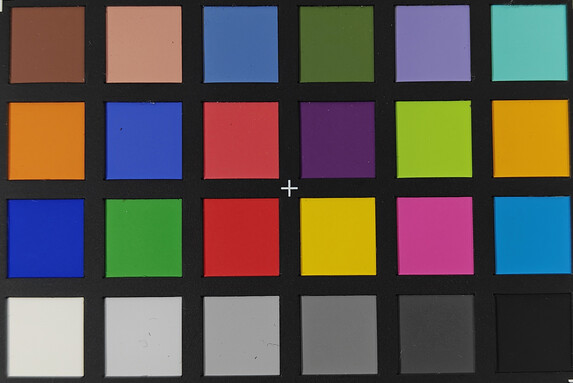

Accessories and warranty - The Realme GT5 comes with a charger
Out-of-the-box, our review sample comes with a 150-watt charger, a data/charging cable (USB-C to USB-C) and a SIM tool as well as instructions. In addition, the device comes with a factory-fitted screen protector. On top of this, our supplier, TradingShenzhen, has added to the Chinese version's box contents by adding an EU adapter for the charger, as well as a USB OTG adapter.
The Realme GT5 has a 12-month warranty. With our TradingShenzhen import device, it is possible to send the smartphone to a German shipping address, in the event of a warranty claim.
Input devices & operation - The Realme GT5 and Face Unlock
Thanks to its refresh rate of up to 144 Hz and a sampling rate of up to 2,000 Hz, animations and fast scrolling are implemented smoothly. The vibration motor also does a good job without feeling as accurate as the top-range devices.
The optical fingerprint sensor beneath the OLED panel responds quickly and reliably. A relatively unsafe 2D Face Unlock function is also on board and it performs very well under daylight conditions.
Display - The Realme phone has an OLED panel

The Realme GT5's "Pro XDR" display measures 6.74 inches and possesses a resolution of 2,772 x 1,240 pixels at a fixed maximum refresh rate of 144 Hz. Adaptive adjustment of the frequency is still not possible but automatic switching between 60 Hz and 144 Hz is available.
We measured over 1,000 cd/m² peak brightness and this is very good for this price segment. The realistic APL18 test (Average Picture Level) also registered a high maximum brightness of 1,321 cd/m².
Typical for OLED panels, the midrange smartphone uses PWM to control the brightness. However, at 120 Hz the fluctuations are low. Our Flickermeter measurements reveal the flickering to be at 360 Hz.
| |||||||||||||||||||||||||
Brightness Distribution: 92 %
Center on Battery: 1080 cd/m²
Contrast: ∞:1 (Black: 0 cd/m²)
ΔE ColorChecker Calman: 5 | ∀{0.5-29.43 Ø4.78}
ΔE Greyscale Calman: 3.9 | ∀{0.09-98 Ø5}
99.5% sRGB (Calman 2D)
Gamma: 2.03
CCT: 7001 K
| Realme GT5 AMOLED, 2772x1240, 6.7" | Google Pixel 8 OLED, 2400x1080, 6.2" | Xiaomi 13T AMOLED, 2712x1220, 6.7" | Samsung Galaxy A54 5G Super AMOLED, 2340x1080, 6.4" | Xiaomi Poco F5 Pro AMOLED, 3200x1440, 6.7" | |
|---|---|---|---|---|---|
| Screen | 39% | 44% | 23% | 36% | |
| Brightness middle (cd/m²) | 1080 | 1450 34% | 1254 16% | 940 -13% | 1002 -7% |
| Brightness (cd/m²) | 1084 | 1410 30% | 1250 15% | 935 -14% | 1004 -7% |
| Brightness Distribution (%) | 92 | 92 0% | 93 1% | 99 8% | 95 3% |
| Black Level * (cd/m²) | |||||
| Colorchecker dE 2000 * | 5 | 1.1 78% | 0.8 84% | 2.4 52% | 0.8 84% |
| Colorchecker dE 2000 max. * | 7.7 | 4.2 45% | 1.6 79% | 3.2 58% | 1.7 78% |
| Greyscale dE 2000 * | 3.9 | 2.1 46% | 1.3 67% | 2.2 44% | 1.4 64% |
| Gamma | 2.03 108% | 2.24 98% | 2.21 100% | 2.05 107% | 2.23 99% |
| CCT | 7001 93% | 6584 99% | 6350 102% | 6422 101% | 6468 100% |
* ... smaller is better
Screen Flickering / PWM (Pulse-Width Modulation)
| Screen flickering / PWM detected | 120 Hz | ||
The display backlight flickers at 120 Hz (worst case, e.g., utilizing PWM) . The frequency of 120 Hz is very low, so the flickering may cause eyestrain and headaches after extended use. In comparison: 53 % of all tested devices do not use PWM to dim the display. If PWM was detected, an average of 8108 (minimum: 5 - maximum: 343500) Hz was measured. | |||
A series of measurements with a fixed zoom level and various brightness settings
Our display color analysis was carried out with the help of a photo spectrometer and the Calman software. Using the "Natural" profile, the DCI P3 deviations in the areas of color (5.0) and gray scale reproduction (3.9) can be considered low but sit outwith the target area (<3). It's also worth mentioning the almost complete sRGB color coverage.
Display Response Times
| ↔ Response Time Black to White | ||
|---|---|---|
| 1.6 ms ... rise ↗ and fall ↘ combined | ↗ 0.8845 ms rise | |
| ↘ 0.7165 ms fall | ||
| The screen shows very fast response rates in our tests and should be very well suited for fast-paced gaming. In comparison, all tested devices range from 0.1 (minimum) to 240 (maximum) ms. » 8 % of all devices are better. This means that the measured response time is better than the average of all tested devices (20.2 ms). | ||
| ↔ Response Time 50% Grey to 80% Grey | ||
| 1.37 ms ... rise ↗ and fall ↘ combined | ↗ 0.727 ms rise | |
| ↘ 0.6475 ms fall | ||
| The screen shows very fast response rates in our tests and should be very well suited for fast-paced gaming. In comparison, all tested devices range from 0.165 (minimum) to 636 (maximum) ms. » 5 % of all devices are better. This means that the measured response time is better than the average of all tested devices (31.6 ms). | ||
The OLED panel's viewing angles are very good and there is also only a small drop in brightness. Using the automatic mode outdoors, the Realme Gt5 made a good impression thanks to its high brightness. The display content should remain legible, even in peak summer sunlight. But, anyone wishing to adjust the brightness manually will have to make do with 483 cd/m².
Performance - The Realme GT5 comes with a Qualcomm SoC
For a smartphone priced at only 500 dollars, the GT5 has opted for a very powerful SoC - the Snapdragon 8 Gen 2. In our benchmarks, paired with 16 GB of RAM, the Kryo CPU and its fast, Cortex X3 prime core (3.2 GHz) were responsible for very high Geekbench scores of over 2,000 points, especially in the area of single-core performance. The Realme phone also performed very well when it came to graphical computations and these are handled by the Adreno 740. However, the onscreen values are limited to 60fps and this doesn't provide much hope for connoisseurs of high frame-rate gaming.
Thanks to the UFS 4.0 storage's high performance and speed, everyday tasks resulted in no noticeable stutters or lags. Operating the system itself and surfing the internet are both handled smoothly despite the low benchmark scores.
| UL Procyon AI Inference for Android - Overall Score NNAPI | |
| Xiaomi Poco F5 Pro | |
| Xiaomi 13T | |
| Google Pixel 8 | |
| Average of class Smartphone (3769 - 81594, n=135, last 2 years) | |
| Average Qualcomm Snapdragon 8 Gen 2 (11338 - 16880, n=21) | |
| Realme GT5 | |
| Samsung Galaxy A54 5G | |
GFXBench (DX / GLBenchmark) 2.7: T-Rex Onscreen | 1920x1080 T-Rex Offscreen
GFXBench 3.0: on screen Manhattan Onscreen OGL | 1920x1080 1080p Manhattan Offscreen
GFXBench 3.1: on screen Manhattan ES 3.1 Onscreen | 1920x1080 Manhattan ES 3.1 Offscreen
GFXBench: on screen Car Chase Onscreen | 1920x1080 Car Chase Offscreen | on screen Aztec Ruins High Tier Onscreen | 2560x1440 Aztec Ruins High Tier Offscreen | on screen Aztec Ruins Normal Tier Onscreen | 1920x1080 Aztec Ruins Normal Tier Offscreen | 3840x2160 4K Aztec Ruins High Tier Offscreen
| 3DMark / Wild Life Extreme Unlimited | |
| Realme GT5 | |
| Google Pixel 8 | |
| Xiaomi Poco F5 Pro | |
| Xiaomi 13T | |
| Samsung Galaxy A54 5G | |
| 3DMark / Wild Life Extreme | |
| Realme GT5 | |
| Google Pixel 8 | |
| Xiaomi Poco F5 Pro | |
| Xiaomi 13T | |
| Samsung Galaxy A54 5G | |
| 3DMark / Wild Life Unlimited Score | |
| Realme GT5 | |
| Google Pixel 8 | |
| Xiaomi Poco F5 Pro | |
| Xiaomi 13T | |
| Samsung Galaxy A54 5G | |
| GFXBench (DX / GLBenchmark) 2.7 / T-Rex Onscreen | |
| Xiaomi Poco F5 Pro | |
| Google Pixel 8 | |
| Xiaomi 13T | |
| Samsung Galaxy A54 5G | |
| Realme GT5 | |
| GFXBench (DX / GLBenchmark) 2.7 / T-Rex Offscreen | |
| Realme GT5 | |
| Xiaomi Poco F5 Pro | |
| Google Pixel 8 | |
| Xiaomi 13T | |
| Samsung Galaxy A54 5G | |
| GFXBench 3.0 / Manhattan Onscreen OGL | |
| Xiaomi Poco F5 Pro | |
| Xiaomi 13T | |
| Google Pixel 8 | |
| Samsung Galaxy A54 5G | |
| Realme GT5 | |
| GFXBench 3.0 / 1080p Manhattan Offscreen | |
| Realme GT5 | |
| Xiaomi Poco F5 Pro | |
| Xiaomi 13T | |
| Google Pixel 8 | |
| Samsung Galaxy A54 5G | |
| GFXBench 3.1 / Manhattan ES 3.1 Onscreen | |
| Xiaomi Poco F5 Pro | |
| Xiaomi 13T | |
| Google Pixel 8 | |
| Realme GT5 | |
| Samsung Galaxy A54 5G | |
| GFXBench 3.1 / Manhattan ES 3.1 Offscreen | |
| Realme GT5 | |
| Xiaomi Poco F5 Pro | |
| Xiaomi 13T | |
| Google Pixel 8 | |
| Samsung Galaxy A54 5G | |
| GFXBench / Car Chase Onscreen | |
| Xiaomi Poco F5 Pro | |
| Realme GT5 | |
| Google Pixel 8 | |
| Xiaomi 13T | |
| Samsung Galaxy A54 5G | |
| GFXBench / Car Chase Offscreen | |
| Realme GT5 | |
| Xiaomi Poco F5 Pro | |
| Google Pixel 8 | |
| Xiaomi 13T | |
| Samsung Galaxy A54 5G | |
| GFXBench / Aztec Ruins High Tier Onscreen | |
| Xiaomi Poco F5 Pro | |
| Realme GT5 | |
| Google Pixel 8 | |
| Xiaomi 13T | |
| Samsung Galaxy A54 5G | |
| GFXBench / Aztec Ruins High Tier Offscreen | |
| Realme GT5 | |
| Xiaomi Poco F5 Pro | |
| Google Pixel 8 | |
| Xiaomi 13T | |
| Samsung Galaxy A54 5G | |
| GFXBench / Aztec Ruins Normal Tier Onscreen | |
| Xiaomi Poco F5 Pro | |
| Google Pixel 8 | |
| Realme GT5 | |
| Xiaomi 13T | |
| Samsung Galaxy A54 5G | |
| GFXBench / Aztec Ruins Normal Tier Offscreen | |
| Realme GT5 | |
| Xiaomi Poco F5 Pro | |
| Google Pixel 8 | |
| Xiaomi 13T | |
| Samsung Galaxy A54 5G | |
| GFXBench / 4K Aztec Ruins High Tier Offscreen | |
| Realme GT5 | |
| Xiaomi Poco F5 Pro | |
| Google Pixel 8 | |
| Xiaomi 13T | |
| Samsung Galaxy A54 5G | |
| Jetstream 2 - 2.0 Total Score | |
| Xiaomi Poco F5 Pro (Chrome 120.0.6099.115) | |
| Average of class Smartphone (23.8 - 387, n=149, last 2 years) | |
| Average Qualcomm Snapdragon 8 Gen 2 (62.7 - 179.2, n=23) | |
| Google Pixel 8 (chrome 116) | |
| Xiaomi 13T (Chrome 119.0.6045.163) | |
| Samsung Galaxy A54 5G (Chrome 112) | |
| Realme GT5 | |
| WebXPRT 4 - Overall | |
| Xiaomi Poco F5 Pro (Chrome 120.0.6099.115) | |
| Average of class Smartphone (27 - 306, n=145, last 2 years) | |
| Average Qualcomm Snapdragon 8 Gen 2 (28 - 183, n=22) | |
| Xiaomi 13T (Chrome 119.0.6045.163) | |
| Samsung Galaxy A54 5G (Chrome 112) | |
| Google Pixel 8 (chrome 116) | |
| Realme GT5 (Realme Browser 40) | |
| Octane V2 - Total Score | |
| Xiaomi Poco F5 Pro (Chrome 120.0.6099.115) | |
| Average of class Smartphone (2228 - 121337, n=197, last 2 years) | |
| Google Pixel 8 (chrome 116) | |
| Average Qualcomm Snapdragon 8 Gen 2 (19870 - 65418, n=25) | |
| Xiaomi 13T (Chrome 119.0.6045.163) | |
| Samsung Galaxy A54 5G (Chrome 112) | |
| Realme GT5 (Realme Browser 40) | |
| Mozilla Kraken 1.1 - Total | |
| Realme GT5 (Realme Browser 40) | |
| Xiaomi 13T (Chrome 119.0.6045.163) | |
| Samsung Galaxy A54 5G (Chrome 112) | |
| Average of class Smartphone (257 - 28190, n=154, last 2 years) | |
| Average Qualcomm Snapdragon 8 Gen 2 (602 - 1837, n=22) | |
| Google Pixel 8 (chrome 116) | |
| Xiaomi Poco F5 Pro (Chrome 120.0.6099.115) | |
* ... smaller is better
| Realme GT5 | Xiaomi 13T | Samsung Galaxy A54 5G | Xiaomi Poco F5 Pro | Average 512 GB UFS 4.0 Flash | Average of class Smartphone | |
|---|---|---|---|---|---|---|
| AndroBench 3-5 | -33% | -78% | -38% | -8% | -39% | |
| Sequential Read 256KB (MB/s) | 3475.6 | 1861.15 -46% | 528.32 -85% | 1876.8 -46% | 3689 ? 6% | 2228 ? -36% |
| Sequential Write 256KB (MB/s) | 3117.44 | 1766.12 -43% | 335.39 -89% | 1773.94 -43% | 3092 ? -1% | 1852 ? -41% |
| Random Read 4KB (MB/s) | 479.83 | 380.76 -21% | 236.23 -51% | 342.04 -29% | 385 ? -20% | 296 ? -38% |
| Random Write 4KB (MB/s) | 577.13 | 452.08 -22% | 70.52 -88% | 372.35 -35% | 474 ? -18% | 339 ? -41% |
Emissions - The Realme GT5 gets warm
Temperature
Our analysis revealed high surface temperatures and this caused the burnout benchmark to end due to overheating under full load (CPU + GPU). This means our heat dissipation measurement was only determined under simplified (CPU) conditions. The 3DMark stress test also ended prematurely due to overheating, meaning we cannot evaluate the Snapdragon 8 Gen. 2's behaviour due to the thermal throttling.
By contrast, throttling was absent in the GFXBench battery benchmark test (ES3.1). The manufacturer's aggressive performance management was probably the reason why the 3DMark tests didn't result in throttling during its 20 runs. That is the reason why the GT5 ended the application quickly, due to overheating.
(±) The maximum temperature on the upper side is 44.7 °C / 112 F, compared to the average of 35.2 °C / 95 F, ranging from 21.9 to 247 °C for the class Smartphone.
(+) The bottom heats up to a maximum of 39.3 °C / 103 F, compared to the average of 34 °C / 93 F
(+) In idle usage, the average temperature for the upper side is 28.7 °C / 84 F, compared to the device average of 32.9 °C / 91 F.
Speakers
Both speakers provide solid sound but the mids and highs could be better balanced. Wired headphones can be connected via a USB port. Anyone preferring Bluetooth for a wireless audio experience can turn to a wide range of codecs (SBC, SSC, AAC, aptX, aptX HD, aptX TWS+ LDAC, LHDC).
Realme GT5 audio analysis
(+) | speakers can play relatively loud (89.9 dB)
Bass 100 - 315 Hz
(-) | nearly no bass - on average 22.5% lower than median
(±) | linearity of bass is average (7.7% delta to prev. frequency)
Mids 400 - 2000 Hz
(±) | higher mids - on average 6.4% higher than median
(+) | mids are linear (5.2% delta to prev. frequency)
Highs 2 - 16 kHz
(±) | higher highs - on average 8.9% higher than median
(+) | highs are linear (4.9% delta to prev. frequency)
Overall 100 - 16.000 Hz
(±) | linearity of overall sound is average (20.4% difference to median)
Compared to same class
» 34% of all tested devices in this class were better, 9% similar, 57% worse
» The best had a delta of 11%, average was 35%, worst was 134%
Compared to all devices tested
» 53% of all tested devices were better, 8% similar, 39% worse
» The best had a delta of 4%, average was 24%, worst was 134%
Xiaomi Poco F5 Pro audio analysis
(+) | speakers can play relatively loud (89.4 dB)
Bass 100 - 315 Hz
(-) | nearly no bass - on average 27.8% lower than median
(±) | linearity of bass is average (10.3% delta to prev. frequency)
Mids 400 - 2000 Hz
(+) | balanced mids - only 4.8% away from median
(+) | mids are linear (4.9% delta to prev. frequency)
Highs 2 - 16 kHz
(±) | higher highs - on average 6.1% higher than median
(+) | highs are linear (5.6% delta to prev. frequency)
Overall 100 - 16.000 Hz
(±) | linearity of overall sound is average (19.2% difference to median)
Compared to same class
» 25% of all tested devices in this class were better, 8% similar, 66% worse
» The best had a delta of 11%, average was 35%, worst was 134%
Compared to all devices tested
» 45% of all tested devices were better, 7% similar, 47% worse
» The best had a delta of 4%, average was 24%, worst was 134%
Battery life - The Realme smartphone lacks wireless charging
Power consumption
The battery's capacity varies depending on each variant's specs. Our review sample has a maximum rated power of 150 watts and possesses an energy storage capacity of 5,240 mAh as well as a charging time of only 20 minutes. The top models use a slightly smaller 240-watt, 4,600 mAh battery which charges even faster - in each case, a suitable charger is included. Despite these powerful chargers, Reallme promises their batteries come with a lifespan of 1,600 charging cycles. Wireless charging is not supported.
| Off / Standby | |
| Idle | |
| Load |
|
Key:
min: | |
| Realme GT5 5240 mAh | Google Pixel 8 4575 mAh | Xiaomi 13T 5000 mAh | Samsung Galaxy A54 5G 5000 mAh | Xiaomi Poco F5 Pro 5160 mAh | Average Qualcomm Snapdragon 8 Gen 2 | Average of class Smartphone | |
|---|---|---|---|---|---|---|---|
| Power Consumption | 29% | 1% | 19% | 9% | -1% | 10% | |
| Idle Minimum * (Watt) | 1.04 | 0.56 46% | 1.13 -9% | 0.75 28% | 0.93 11% | 1.036 ? -0% | 0.842 ? 19% |
| Idle Average * (Watt) | 1.43 | 1.08 24% | 1.37 4% | 1.51 -6% | 1.04 27% | 1.766 ? -23% | 1.439 ? -1% |
| Idle Maximum * (Watt) | 1.5 | 1.17 22% | 1.42 5% | 1.62 -8% | 1.08 28% | 1.94 ? -29% | 1.624 ? -8% |
| Load Average * (Watt) | 11.38 | 8.01 30% | 8.98 21% | 4.91 57% | 11.27 1% | 7.22 ? 37% | 7.03 ? 38% |
| Load Maximum * (Watt) | 11.47 | 8.89 22% | 13.23 -15% | 8.93 22% | 13.84 -21% | 10.4 ? 9% | 11.3 ? 1% |
* ... smaller is better
Power consumption: Geekbench (150 cd/m²)
Power consumption: GFXBench (150 cd/m²)
Battery runtime
In our Wi-Fi test, with an adaptive display brightness of 150 cd/m2, the Realme GT5 lasted roughly 15.5 hours.
| Realme GT5 5240 mAh | Google Pixel 8 4575 mAh | Xiaomi 13T 5000 mAh | Samsung Galaxy A54 5G 5000 mAh | Xiaomi Poco F5 Pro 5160 mAh | |
|---|---|---|---|---|---|
| Battery runtime | |||||
| WiFi v1.3 (h) | 15.7 | 13.6 -13% | 17.1 9% | 15.7 0% | 16 2% |
Pros
Cons
The Realme GT5 verdict
For the midrange segment of up to 500 dollars, the Realme GT5 offers very powerful hardware. Certainly, corners have had to be cut due to the Snapdragon 8 Gen 2 smartphone's aggressive pricing strategy. These include the lack of a waterproof case or wireless charging as well as the slow USB 2.0 standard. However, with its GT model, Realme has put together an overall tight package.
Extremely fast charging, speedy memory with high storage variants (24 GB of RAM, 1 TB of UFS 4.0) and tri-band GPS can usually be found in the top or high-end areas. The main camera, with its OIS, is also a success and there can be no doubts concerning the Qualcomm SoC's performance. Unfortunately, the GT5 is unable to deliver its available power at all times due to poor cooling.
The Realme GT5 offers largely high-end specs at a mid-range price.
For anyone who can handle lower performance, the Google Pixel 8 represents an interesting alternative. However, the Snapdragon 8+ Gen 1-powered Poco F5 Pro offers bags of power in the midrange - without any import restrictions.
Price and availability
Imported from Trading Shenzhen, the Realme GT5 (12 GB of RAM and 256 GB of flash storage) can be had for around 545 dollars.
Realme GT5
- 01/18/2024 v7 (old)
Marcus Herbrich
Transparency
The selection of devices to be reviewed is made by our editorial team. The test sample was provided to the author as a loan by the manufacturer or retailer for the purpose of this review. The lender had no influence on this review, nor did the manufacturer receive a copy of this review before publication. There was no obligation to publish this review. As an independent media company, Notebookcheck is not subjected to the authority of manufacturers, retailers or publishers.
This is how Notebookcheck is testing
Every year, Notebookcheck independently reviews hundreds of laptops and smartphones using standardized procedures to ensure that all results are comparable. We have continuously developed our test methods for around 20 years and set industry standards in the process. In our test labs, high-quality measuring equipment is utilized by experienced technicians and editors. These tests involve a multi-stage validation process. Our complex rating system is based on hundreds of well-founded measurements and benchmarks, which maintains objectivity. Further information on our test methods can be found here.




